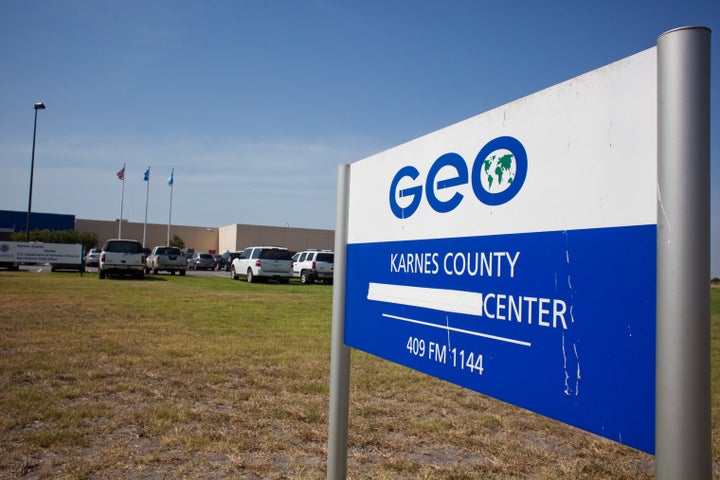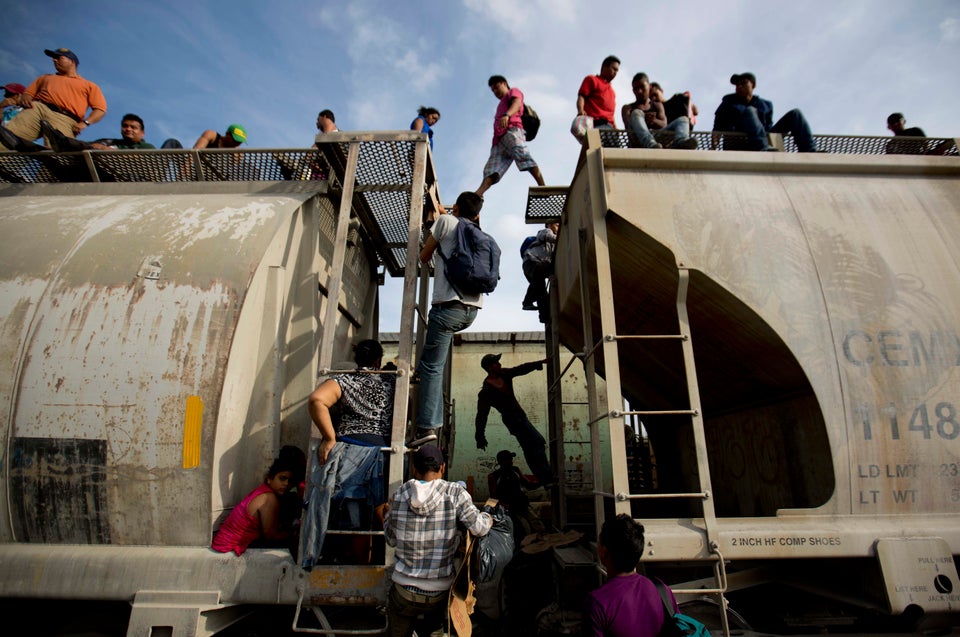KARNES CITY, Texas ― President Donald Trump, whose administration argues that immigrants abuse the court system to delay deportation, dispatched immigration judges to the country’s two largest family detention centers this week so detainees’ cases can be processed more quickly.
But experts ― and The Huffington Post’s visit to one of the centers ― suggest that the president may end up disappointed if he thinks relocating judges will speed up deportations.
When Judge Monica Little, who normally presides over immigration court in Los Angeles, heard the first four cases under the new system on Wednesday at the Karnes County Residential Center in Texas, she issued rulings that gave the detainees before her weeks to find lawyers and collect evidence.
That shouldn’t be surprising, according to Kathryn Mattingly, a spokeswoman for the Executive Office of Immigration Review, the branch of the Justice Department that handles deportation decisions.
“Each case is individual and each judge will give the case due process,” she said. “The cases will all be heard the same way.”

Little heard her first two cases at the Karnes facility by video conference call from the Karnes Correctional Center a few blocks away. The first man, from Senegal, had been detained since September, when he crossed into the United States through Hidalgo, Texas. Little said he could have three weeks to look for an attorney, insisting that officials at the detention center hand him a list of legal service providers while the video was still streaming.
Immigrants facing deportation proceedings have a right to seek an attorney, but the government doesn’t guarantee them or pay for them like it does in criminal proceedings. Immigrants with lawyers are twice as likely to win relief as those without them, according to a study by the American Immigration Council.
“The only thing I want to say is please help me,” the man said, speaking through an interpreter in Wolof. “I don’t want to go back home. I have issues over there. Please help me.”
The lawyer for a Somali detainee, the second man Little heard by teleconference, had to call the court by phone because she hadn’t yet learned that the hearing would take place in Karnes City. Instead, she had gone to the immigration court in San Antonio, where the center’s hearings had previously been held. Little granted her a month to locate documents from Somalia.
A Cuban woman and her daughter who had been detained since mid-January, shortly after then-President Barack Obama eliminated the so-called “wet foot-dry foot” policy, appeared in person and asked for a continuance so they could find a lawyer. Little set the hearing for March 31 to give them more time.
A Central American woman appeared while her two children were in day care and asked the court to schedule her hearing for Thursday, when an attorney could be present. She requested a private hearing to discuss her claims.
The judge reassignments were part of a larger effort by the Trump administration to focus immigration courts’ energy on ushering immigrant detainees through proceedings more quickly in order to free up bed space in the over-capacity detention system. His administration also sent judges to four other detention centers that house adults.
But just because immigration judges have been moved to detention facilities doesn’t mean the outcomes will change, or even move much faster, Dana Leigh Marks, head of the National Association of Immigration Judges, told The Huffington Post. “There’s always pressure on the judges with detained cases to move as quickly as possible, without sacrificing due process,” Marks said.
It’s too soon to say whether transferring the judges is an appropriate strategy to tackle the immigration courts’ notorious backlog, she added. But whatever benefit the Trump administration sees in expediting family detention cases should be weighed against the new costs, Marks cautioned.
“You may be able to move a few of these cases a few weeks faster,” Marks said. “But at what price to the taxpayers, and at what price to the people on the overcrowded Los Angeles docket Judge Little left behind?”
“There’s always pressure on the judges with detained cases to move as quickly as possible, without sacrificing due process.”
- Dana Leigh Marks, head of the National Immigration Judges Association
Handing down deportation orders faster also won’t necessarily stop cases from hitting roadblocks elsewhere, according to Stephen Legomsky, the former lead counsel for U.S. Citizenship and Immigration Services. “Even if this move did increase the number of removal orders issued by immigration judges, it would just cause a further bottleneck at the Board of Immigration Appeals, unless the BIA’s membership and attorney support staff were similarly reinforced,” Legomsky wrote in an email to HuffPost.
But the legal groups that represent women and children locked in family detention centers worry that the changes will undermine detainees’ rights.
Their most immediate concern is that sending judges with marching orders to expedite proceedings might interfere with attempts to find lawyers, said Manoj Govindaiah, the head of family detention services for the legal services organization RAICES. Groups like his rely heavily on a limited number of pro bono attorneys to take family detention cases. The lack of paid attorneys causes scheduling problems that slow down the hearing process.
“What we are really hoping to figure out is how amenable the judges will be to continue cases,” Govindaiah told HuffPost. “Typically, the San Antonio court has really been able to work with us to accommodate pro bono scheduling. But if the reason that these judges are all coming down in person is to expedite all these cases, then I don’t know how that’s going to play out.”
Little’s receptiveness on Wednesday to continuing cases helped allay that concern somewhat.
But legal groups are also alarmed that the Trump administration dispatched the visiting judges after chipping away at humanitarian relief for immigrants in other ways. For the last year and a half, most of the mothers and children locked in family detention who pass “credible fear” interviews ― the first step in applying for asylum in the U.S. ― have been released after three weeks. U.S. District Judge Dolly Gee ruled in 2015 that detaining kids longer than that violates the Flores Settlement, which says that children should generally be released and held in the least restrictive setting possible.
The White House has sent signals that it wants to find a way around that ruling. The executive order the president signed on Jan. 25 to crack down on sanctuary cities declared a new policy of ending “the abuse of parole and asylum provisions currently used to prevent the lawful removal of removable aliens.” That’s an oblique reference to the flood of Central American asylum and humanitarian relief claims that first skyrocketed in 2014, leading the Obama administration to hastily expand family detention after all but abandoning it five years before.
And last month, the Trump administration ordered asylum officers to narrow the criteria for approving “credible fear” claims. Failing a credible fear interview means that only ICE has the authority to release an immigrant from detention; a judge has no power to set a bond hearing unless the credible fear decision is reversed.
“Everything is new,” Elena Alderman, the advocacy director for the legal services group CARA, told HuffPost. “We don’t know how this is going to be implemented. It’s a very confusing situation.”

